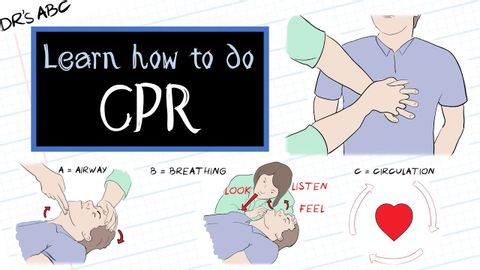如何做心肺復甦術 - 動畫視頻 (How To Do CPR - Animated Video)
Chan Shuk Han Connie 發佈於 2021 年 01 月 14 日  沒有此條件下的單字
沒有此條件下的單字US /əˈprəʊtʃ/
・
UK /ə'prəʊtʃ/
- v.t./i.逼近;找...商量
- n. (c./u.)通道;入口;接洽;處理方式;方法
US /ˈpræktɪs/
・
UK /'præktɪs/
- n.(醫生;律師等的)業務;工作;練習;慣例
- v.t./i.(醫生;律師等)開業;實踐;練習;操練;實踐
US /ɪˈfɛktɪv/
・
UK /ɪˈfektɪv/
- n.簡述重點;翻新胎面;重述要點;翻新的輪胎
- v.t.概括

